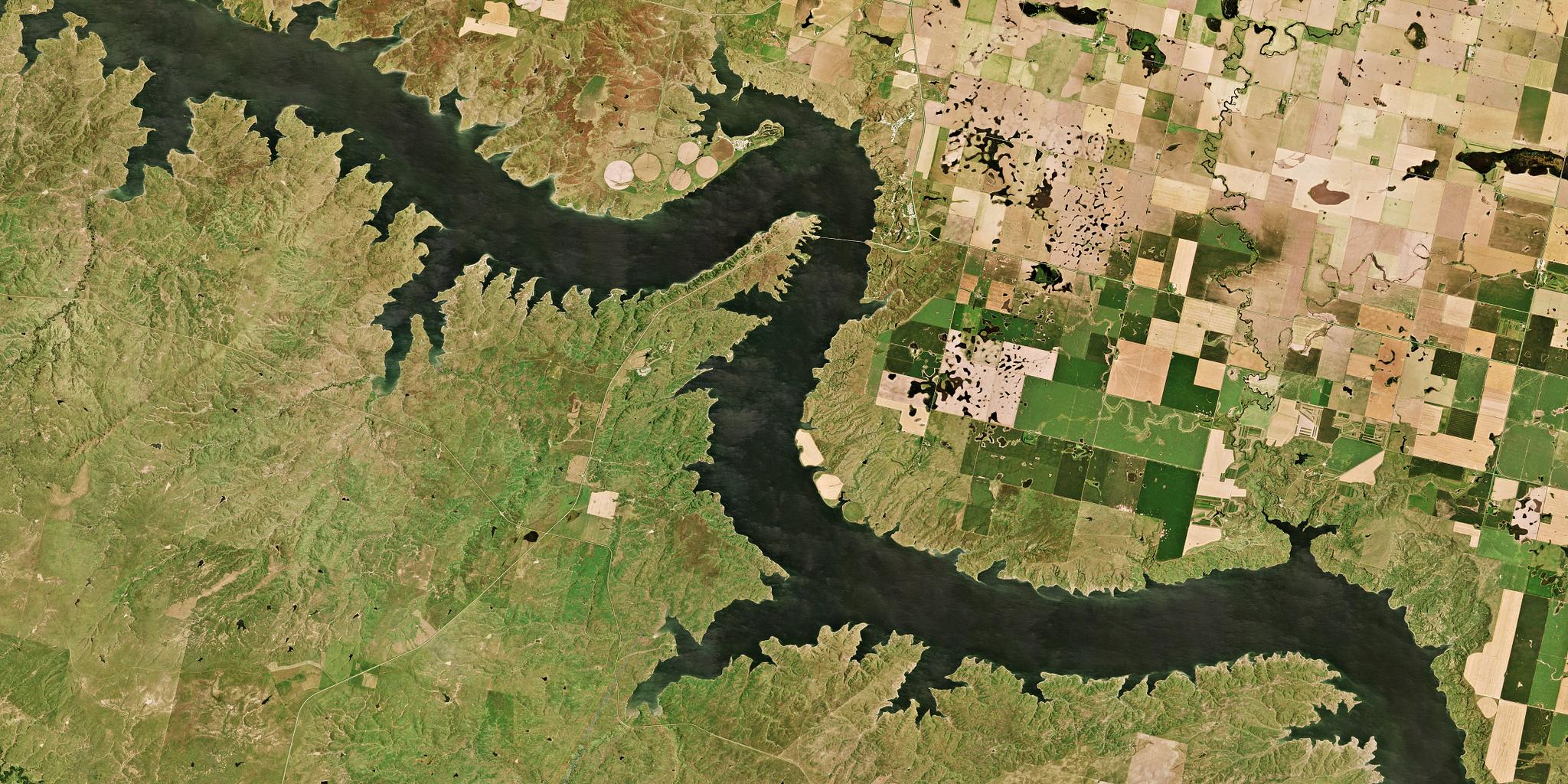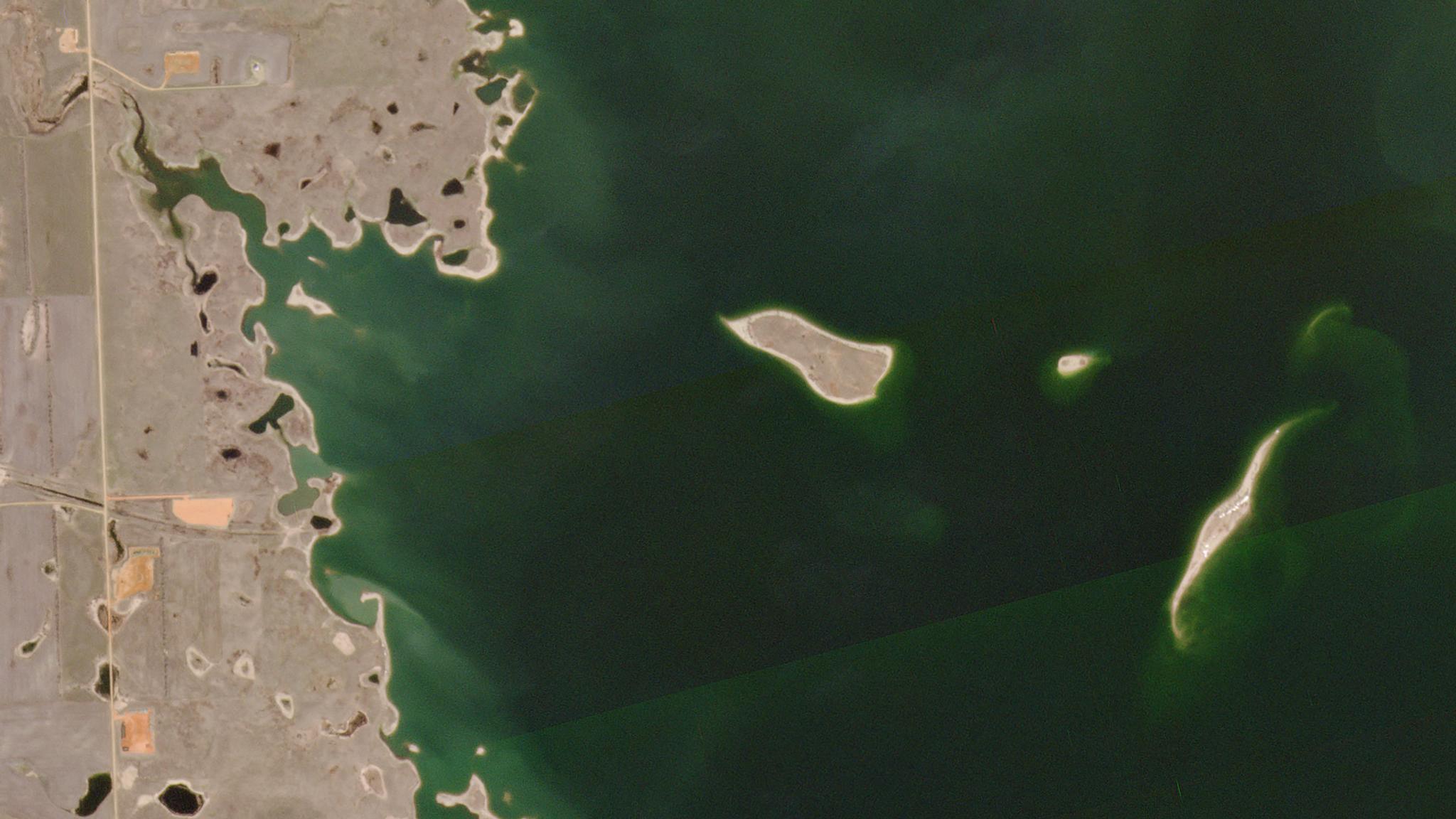U. S. Army Corps of Engineers Utilizes Planet Data to Monitor Endangered Species Populations and Their Critical Habitats

The complex shoreline of Lake Oahe highlights the many tributaries that enter the Missouri River as it meanders through the plains of South Dakota. This PlanetScope image was collected on August 29, 2019. © 2019, Planet Labs Inc. All Rights Reserved.
StoriesThe Missouri River Basin supports an abundance of wildlife, including the least tern and piping plover—shorebirds that are federally listed under the Endangered Species Act. Each depends on the Missouri River for a nesting habitat. As part of their Missouri River Operations Mission, the U.S. Army Corps of Engineers (USACE) is responsible for monitoring parts of the Missouri River Basin to make sure that the Endangered Species Act is adhered to, while ensuring the Missouri River Mainstem System dams continue producing energy. For more than 20 years, the USACE and U. S. Fish and Wildlife Service have conducted formal consultation under Section 7 of the Endangered Species Act to assess the potential impacts to threatened and endangered species. The most recent consultation in 2018 resulted in a Biological Opinion (BiOp) issued by the U. S. Fish and Wildlife Service to the USACE. The BiOp concluded that continued operation of the Missouri River Mainstem System dams and reservoirs were unlikely to jeopardize the existence of the least tern and piping plover on the Missouri River, as long as the USACE implemented actions described in the BiOp. USACE selected and utilized Planet’s RapidEye data to assess the habitats in compliance with the BiOp requirements. When Planet retired the RapidEye constellation earlier this year, a new data source was needed. Planet Federal solutions engineer, Bill Raymond, worked with the USACE to identify an alternative solution that would meet their needs: PlanetScope. The transition to PlanetScope data increased the resolution of the imagery previously utilized for the basemaps, and did so without the large price tag that can often accompany tasking satellites that collect higher resolution imagery. Planet’s agile operations allowed Raymond to support the custom technical integration, ensuring continuity of the mission.



Ready to Get Started
Connect with a member of our Sales team. We'll help you find the right products and pricing for your needs

